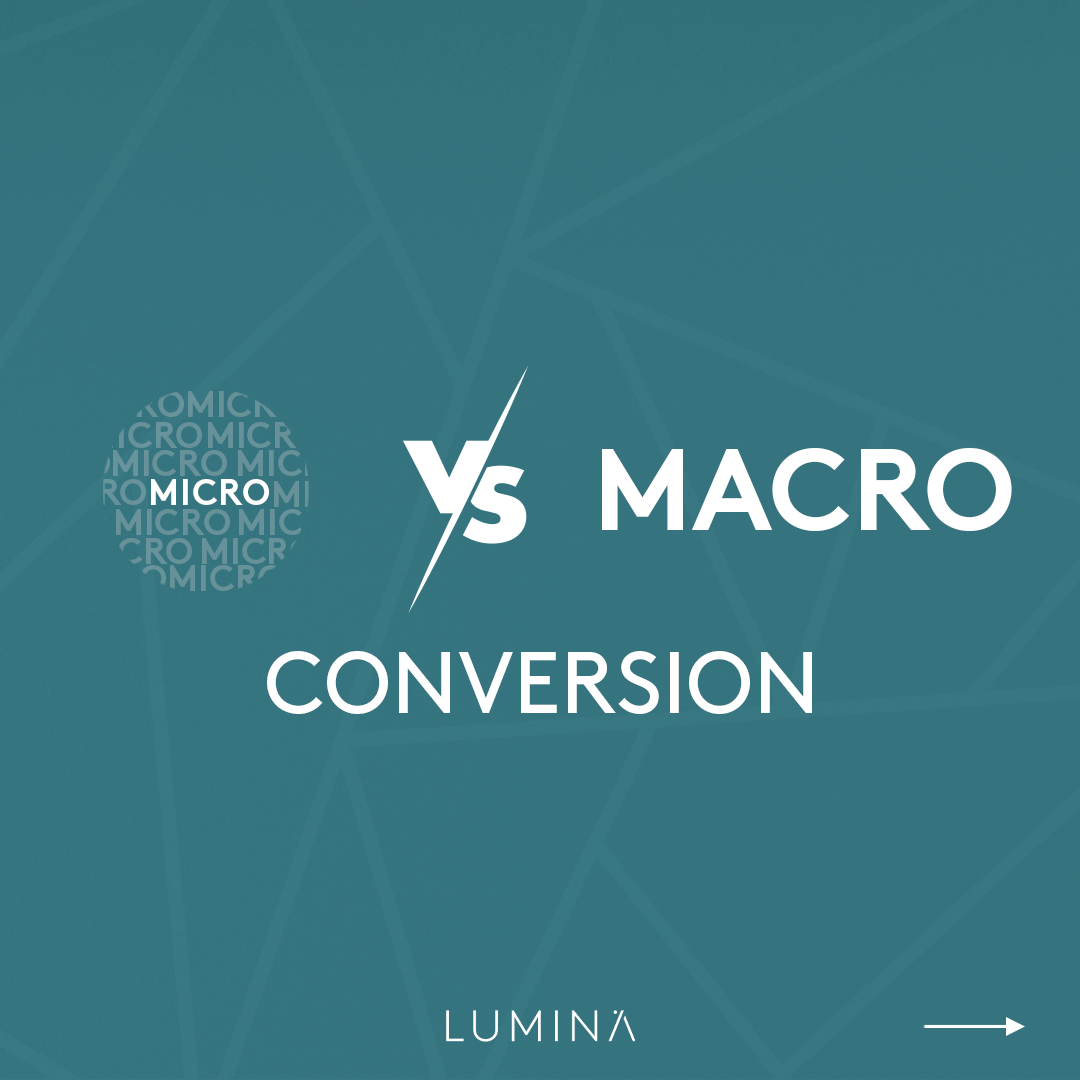What’s the Difference Between Macro and Micro Conversions?

Conversion represents the person who buys a certain product, clicks a button, or shares/tags your brand. It is usually an action that the user takes due to being persuaded by a certain content, picture, or offer. Conversion is divided into two sub-categories: Macro and Micro. Being aware of the difference between these types is important to understand your profit, where it is coming from and why the users are converting.
What is Macro Conversions?
Macro conversions are the actual actions made on your website, like purchases and they are divided into three categories as well which are revenue-based which are the ones related to actual purchases, lead member acquisition are the ones who are interested to know more about your brand and are reachable, and Inquiry which are the ones who request to know more and will probably make a purchase.
They are basically the reason for keeping your Ecommerce website going and your main target like quotation request, filling the contact form, signing up to your newsletter, or any other form of interaction that might lead to making a purchase and increasing your revenue.
What is Micro Conversion?
Micro conversions represent the users who want to be involved and know more about your brand, so it is brand awareness that results in baby steps towards reaching a macro conversion or purchase. Digital marketing is essential for this type of conversion to get to more potential customers and a wider audience.
They basically pave the way towards macro conversions, like a simple follow or subscription.
Difference Between Macro and Micro Conversions
Improving macro and micro conversions is a necessity for the growth of your business and the enhance your website performance, that's why knowing the difference between the two types is important.
As previously stated, macro conversions are the actions that lead to purchases, thus increasing the revenue and sustaining the business. Some of these actions are: creating an account and signing up to newsletters or blogs, requesting a quotation and making a purchase. All actions are common in any Ecommerce website.
Micro conversions are the small steps and as mentioned earlier, they are the baby steps towards making a purchase and turning into macro conversions. Some of these steps are: adding to cart, watching a video, adding to wish list, searching and clicking on results...the list goes on since any small action taken can be a sign of interest and might lead to making a purchase and turning into macro conversion.
Which one is a matter for Your Business?
Micro and Macro conversions are equally important for your business, they both allow you to understand your buyer's performance and interests along with the trigger points that led to the purchase. Studying the micro conversions helps in finding out who are the potential customers through several factors, such as brochure download, price inquiry...etc which indicates the chance to turn into macro conversions.
In order to grow your business, having customers is the main target which is reachable by offering users the ultimate journey and turning them into loyal clients who spread awareness and keep coming back to check your products/services every once in a while. Tracking macro and micro conversions and understanding the website visitors is a key factor to success and increased income.
How to Improve Conversions?
The conversion rate is calculated by dividing the number of conversions by the number of visitors, so it is important to integrate a good digital marketing plan to increase the website traffic which will definitely enhance the conversion rate.
Adding few features to your website is beneficial and when deciding what elements to include, it is important to know the purpose of each and the end result which is generating a better sales rate. Think of every additional feature as micro conversions that will eventually turn into macro conversions. Be it a blog, a newsletter
In addition to the above, here are some tips on how to improve conversions:
-Remove unnecessary info or fields
When subscribing or completing a purchase, make sure to remove unnecessary fields and only keep the required ones that include the needed details. This will avoid driving away potential clients and helps in decreasing the bounce rate.
-Make sure to add reviews
adding reviews will provide a sense of comfort and leads to increasing purchase rate.
-Keep your landing page clear
keeping your pages neat will avoid any distraction and will show the users what they need to see.
-Allow third party sign-ups
Giving the users the option to log in using other accounts will increase the number of subscribers due to the fact that this will save them some time.
-Include purchase upsell
just before the purchase completion phase, make sure to show the user similar products, which will increase the chance of elevating the purchase value.
-Add CTA content
Call to action content increases both forms of conversions. So the more the CTA wording is appealing, the more actions are taken.
Other features include: include a chat button to show full support and money back option.
Final Words
Tracking and understanding macro and micro conversions will help you improve the user experience which results in a better sales rate. Every business' goal is to achieve a certain number of purchases per year, so it is necessary to optimize your website accordingly and think of every feature as another step towards better revenue.


